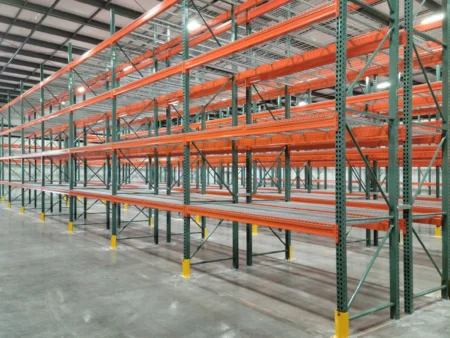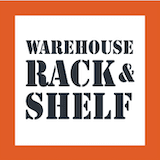
Warehouse racking systems are the backbone of efficient storage operations. Among these, selective pallet rack systems stand out as a versatile solution for storing goods on pallets. Let’s take a look at the key components and benefits of these systems.
Key Components of Selective Pallet Racking:
- Uprights: These vertical frames form the structural foundation of the racking system, supporting the weight of the stored pallets. They are typically made of heavy-duty steel and can be adjusted to accommodate various pallet heights.
- Step Beams: These horizontal beams are attached to the uprights to create the shelves where pallets are placed. They are adjustable to create multiple levels of storage within the rack.
Key Accessoreis of Selective Palelt Racking:
- Row Spacers: These elements connect the rows of racking, ensuring stability and rigidity.
- Pallet Supports: These are crossbars that provide additional support to the pallets, preventing them from sagging or falling through the rack.
- Wire Decking: This optional component offers a flat surface for storing smaller items directly on the rack, increasing storage capacity and flexibility.
- ProDeck50: 50% Open punched pallet rack decking for fire safety.
Benefits of Selective Pallet Racking:
- Accessibility: Selective pallet rack systems allow for direct access to every pallet, making it easy to retrieve or store goods.
- Flexibility: Adjustable shelves and customizable configurations make these systems adaptable to various storage needs.
- Efficiency: The clear layout and easy access to goods streamline picking and replenishing processes.
- Safety: The sturdy construction and secure pallet supports ensure the safety of both workers and stored goods.
- Space Optimization: Vertical storage maximizes warehouse space utilization.
By understanding the key components and benefits of selective pallet racking, you can make informed decisions about your warehouse storage needs. Consider factors like load capacity, accessibility, and flexibility to choose the right racking system for your specific requirements.
